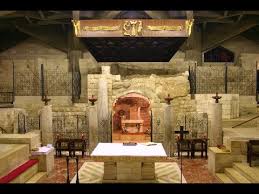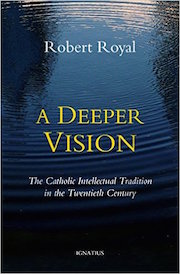Given current conflicts in the Middle East and Islamic extremism, we need all the light we can shed on the beliefs of Muslims. There are drastic differences, of course, between Islam and Christianity, but there are some similarities between Islamic and Christian eschatology – the study of end times – though these need to be carefully parsed out because end time is a subject of great interest to groups like ISIS.
Muslim Eschatology: The author of a recent book, The Islamic Antichrist, uses the pen name “Joel Richardson.” He claims to have been engaged over the years in hundreds of Christian-Muslim dialogues, including dialogues regarding Islamic eschatology. But because of death-threats against him and his family, he has adopted a pseudonym in this and several other books on Islam and Judaism. He studiously avoids sensationalism, and sticks to the traditional eschatological doctrines in Islamic “holy books” – the Qur’an, the hadith (sayings of Muhammad), and the sirat (ancient revered biographies of Muhammad) – along with statements of Islamic scholars, with hundreds of footnoted references, to bring out the basic eschatological patterns.
The similarity with Christian eschatology lies in a portrayal of the “end times.” Christ and an anti-Christ appear during a final battle, in which the forces of God encounter the forces of Satan, leading to a final victory. But as one might expect, the Christian and Islamic scenarios differ remarkably in the details.
In the final days, Muslim scholars hold, Jesus comes again. But this is the Muslim version of Jesus – Isa Al-Maseeh, who just happens to fit the description of the “false prophet” described in Revelation as performing miraculous signs and being worshipped. This Muslim “Isa” (unlike what Muslims allege to be “distortions” of Jesus in the New Testament) was just one of the last in a series of prophets, all of whom testified to the future coming of Muhammad and God’s final revelation. Filled with zeal for Islam, at the end, Isa Al-Maseeh will descend and destroy all crosses, convert Christians from the most abominable of all sins against Allah (Jesus claiming to be the Son of God), and kill all Christians and others who refuse to convert to Islam.
There will also be an anti-Christ – Ad-Dajjal in the Muslim version. He will claim to be the Messiah, but is a liar. He will become the charismatic leader of the Jews, followed by Jews and women, but will finally be slaughtered by the Muslim Jesus.
The final apocalyptic battles will take place north of Israel in the land of Magog (Rev. 20:7) during the reign of the final caliph, the Mahdi (the rough Muslim equivalent of the pope), who will rule over all of Islam. The Mahdi will wear a crown and ride a white horse, matching the description in Revelation. (6:2) And with the help of Isa Al-Maseeh (the Muslim Jesus) will defeat Dajjal (the Muslim anti-Christ), resulting in a world where Islam finally is the only religion, and all other religions have been banished from the face of the earth.
![The Great Red Dragon and the Woman Clothed in the Sun by William Blake, c. 1810 [National Gallery of Art, Washington, DC]](https://www.thecatholicthing.org/wp-content/uploads/William_Blake_RedDragon-244x300.jpg)
It has been (accepted) by all the Muslims in every epoch, that at the end of time a man from the family (of the Prophet) will, without fail, make his appearance, one who will strengthen Islam and make justice triumph. Muslims will follow him, and he will gain domination over the Muslim realm. He will be called the Mahdi.
Several jihadist groups act in the belief that their terrorism will hasten the appearance of the Mahdi.
Christian Eschatology: Although prophecies about the “last days” and the Second Coming in the New Testament are steeped in mystery, the nature and deeds of the “antichrist” are fairly clearly outlined in the epistles of John and in Revelation:
1) The anti-Christ is a deceiver who denies that there can be any relationship between Father and Son in God: “Who is a liar but he who denies that Jesus is the Christ? He is anti-Christ who denies the Father and the Son. Whoever denies the Son does not have the Father either; he who acknowledges the Son has the Father also.” (1 Jn 2:22-23)
2) The anti-Christ refuses to recognize that the Son of God has come to earth and become human: “Every spirit that confesses that Jesus Christ has come in the flesh is of God, and every spirit that does not confess that Jesus Christ has come in the flesh is not of God. And this is the spirit of the anti-Christ, which you have heard was coming, and is now already in the world.” (1 Jn 4:1-3)
3) The “seducer” and “anti-Christ” is one who denies this truth about God’s Son. (2 Jn. 1:7) Satan, through the ministrations of the “Dragon” and the “Beast” (Rev. 13:4ff), who promote the spirit of the anti-Christ, will seek total world domination and worship. And a rather specific form of execution will be performed on those who refuse to adore “the beast or his image” – namely beheading. (Rev. 20:4)
Reading this prophetic segment, some of us who are familiar with the emergence of ISIS and the Caliphate in the Middle East, the innumerable beheadings, the slaughter or exile of Christians, and the wholesale destruction of churches, may tend to see the “anti-Christ” as something or someone of clearly Islamic origin. From the Muslim perspective, however, the anti-Christ, Ad-Dajjal, is actually the Christian Jesus as portrayed in the eschatology of the Second Coming.
So it would be at least a semantic mistake for a Christian to call Islam or a Muslim “the anti-Christ,” since the closest avatar of the Muslim anti-Christ is Christ Himself! Muslim eschatology seems to take its cue, so to speak, from Christian eschatology, bringing in many of the same figures, but with systematic inversions – making the Christian “good” bad, and the Christian “bad” good.
All this underscores the difficulty, and maybe the uselessness, of “dialoguing” with Muslims, especially on such doctrines. And the need to know ahead of time what we – and they – are talking about, lest different understandings of key ideas lead us to think we agree when, in fact, we have diametrically opposed beliefs.
















